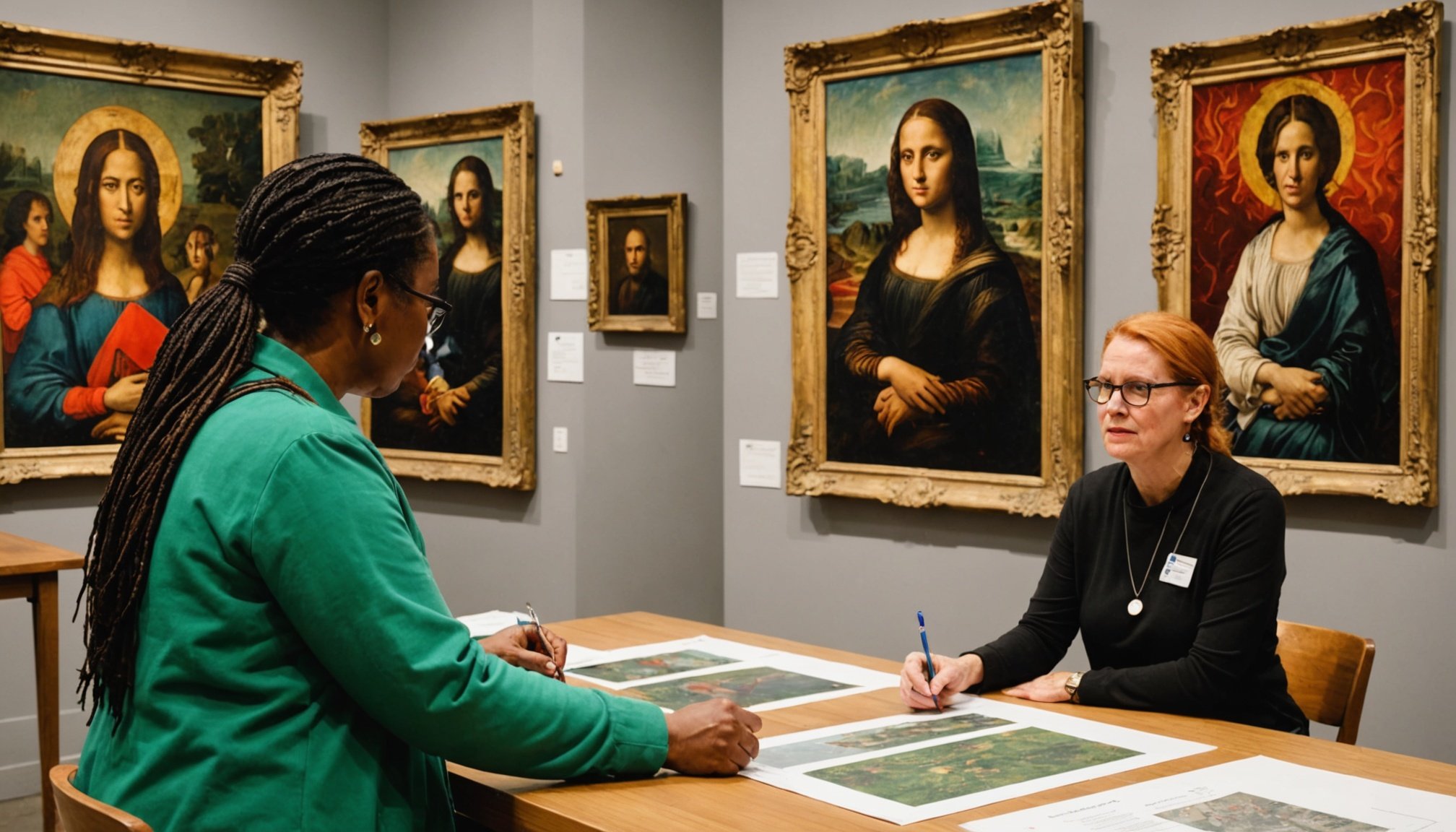Overview of Museums and Mental Health Support
Museums have long served as sanctuaries of culture and learning. In the historical context, whilst mental health was often overlooked, certain art institutions began subtly integrating support structures through exhibitions that touched on emotional themes. This laid groundwork for today’s robust intersection of art and mental health advocacy.
The evolution of these programs can be traced back to initiatives that started as mere exhibitions but gradually included art therapy and community-driven activities. Today, many museums run comprehensive art therapy programs designed specifically for mental wellness. These undertakings not only help individuals engage in therapeutic activities but also offer a space for emotional expression.
Additional reading : Spotting and transforming toxic relationship habits: a guide
Community engagement plays a critical role in the success of these mental health initiatives. By involving local groups and individuals, museums create a supportive environment conducive to healing. They curate collaborative projects and locally-focused exhibitions that resonate more deeply with participants, fostering a sense of belonging and understanding.
Overall, by leveraging their cultural resources and integrating mental health frameworks, museums have transformed into pivotal institutions in promoting psychological wellbeing.
Have you seen this : Harnessing Telemedicine: Revolutionizing Chronic Skin Disorder Management for Optimal Results
Innovative Programs Offered by Museums
In their quest to enhance mental wellness, museums have developed a variety of innovative programs that incorporate art workshops and distinctive healing initiatives. These programs are designed to utilise art’s therapeutic power, offering unique avenues for personal growth and emotional well-being.
Case Studies of Successful Museum Programs
Prominent museums around the world are implementing transformative programs. For example, the Museum of Modern Art hosts sessions where participants engage in art-making to explore their emotions and experiences actively. These initiatives have shown success by encouraging personal expression and increasing the understanding of mental health issues.
Workshops and Interactive Art Experiences
Many museums offer art workshops that allow participants to immerse in interactive experiences. These are not just passive viewings; they involve hands-on activities like painting and sculpture-making, fostering a sense of accomplishment and emotional release. Through such initiatives, attendees find a safe space to process emotions and connect with others.
Collaborations with Mental Health Professionals
Collaboration between museums and mental health professionals strengthens program effectiveness. Psychologists and therapists often partner with museums to develop workshops that integrate therapeutic practices. Such partnerships have been proven to enhance the effectiveness and reach of healing initiatives, offering a profound impact on participants.
Testimonials and Impact on Participants
Participant testimonials serve as powerful narratives that highlight personal transformation through art. Many individuals recount newfound emotional clarity and increased self-awareness after engaging with museum-led art experiences. These stories powerfully illustrate art’s healing potential and underscore its role in personal healing journeys.
Attendees often express that artistic activities provided them with outlets for emotional release and self-expression, aspects they found challenging in conventional settings. Such testimonials form a compelling body of evidence that reinforces the emotional and psychological benefits derived from art-centered programs.
Feedback consistently reveals that shared experiences within museum settings foster a sense of community. Participants benefit from relating to others encountering similar challenges, strengthening their support network. The communal nature of these programs amplifies healing, as individuals draw strength from feeling less isolated in their struggles.
The synthesis of these shared experiences contributes significantly to community healing, extending the impact beyond individual participants. Testimonials shed light on the powerful synergy between art, mental wellness, and community, substantiating the value of museums in promoting mental health. The diverse narratives collectively emphasise the transformative power of art in addressing emotional and psychological needs.
Research Supporting the Efficacy of Art in Healing
The interplay between art therapy and mental health has been widely studied, offering robust evidence of its positive impact. Scientific studies have consistently linked art engagement to improved mental wellness. Research demonstrates that participating in art activities significantly reduces stress levels, boosts mood, and enhances overall emotional well-being.
Studies Linking Art Engagement to Mental Wellness
A landmark study highlights how regular art-making activities can lead to measurable improvements in mental health. Participants report feeling calmer and more focused, indicating a direct link between creativity and emotional regulation. This reinforces the therapeutic potential of incorporating art into mental health regimes.
Analysis of Art Therapy Methods
Different art therapy methods have been scrutinised, revealing varied but consistently positive outcomes. Techniques such as painting, sculpture, and expressive writing allow individuals to process emotions non-verbally, fostering self-discovery and healing. These approaches provide safe outlets for expression, making them invaluable for those dealing with emotional distress.
Impact Metrics and Outcomes
Quantitative data supports the claim that art therapy leads to substantial improvements. Metrics such as reduced anxiety, increased emotional resilience, and higher self-esteem underscore the profound benefits of art therapy. Such findings validate the integration of art therapy as a complementary approach to traditional mental health treatments.
Insights from Mental Health Professionals
In the realm of mental health, the integration of art therapy is gaining recognition for its transformative potential. Mental health professionals increasingly champion art as an essential component in therapeutic practices. Therapists who incorporate artistic expression into treatment often see clients achieve breakthroughs that verbal therapy alone might not facilitate. Art enables exploration of emotions in a non-threatening environment, prompting revelations and emotional relief.
Professional insights highlight the effectiveness of art in fostering self-awareness and emotional regulation. During therapy sessions, creating art can encourage mindfulness, helping patients focus and calm the mind. Insights from therapists suggest that the non-verbal, creative process allows individuals to express underlying issues they might struggle to articulate.
Looking to the future, there’s a growing consensus that art will play a critical role in holistic approaches. Professionals foresee expanding art’s integration in therapy beyond traditional mediums, incorporating digital and interactive elements. This forward-thinking vision encourages the adaptation of therapy to include diverse art forms, making treatments more accessible and engaging.
Through their expertise, mental health practitioners provide a roadmap for evolving therapeutic methodologies, ensuring that art remains a powerful tool in promoting comprehensive healing.
Future Trends in Art and Mental Health Programs
Recent developments show that future trends in the fusion of art and mental health revolve predominantly around harnessing emerging technologies. By incorporating advancements like Virtual Reality (VR) and Augmented Reality (AR), museums are poised to offer more immersive and personalized art therapy experiences. These technologies provide new dimensions for individuals to engage with art, facilitating more profound therapeutic outcomes.
Emerging Technologies in Art Therapy
Virtual Reality is increasingly utilized in therapeutic settings, allowing participants to explore virtual environments that promote relaxation and creativity. By simulating different worlds, VR can help users reduce anxiety and enhance emotional regulation, creating a safe space for self-expression.
Shifts in Community Needs and Museum Responses
As community mental health needs evolve, museums are adapting by developing more inclusive and accessible programs. Customizing initiatives to address specific community challenges ensures that museums remain relevant and vital to public wellbeing.
Potential for Virtual and Augmented Reality in Programs
The integration of AR offers interactive storytelling experiences that can deepen participants’ emotional connections to art. This potential use in therapeutic programs signifies a forward-thinking approach, promising greater accessibility and engagement for diverse audiences in their healing journeys.






